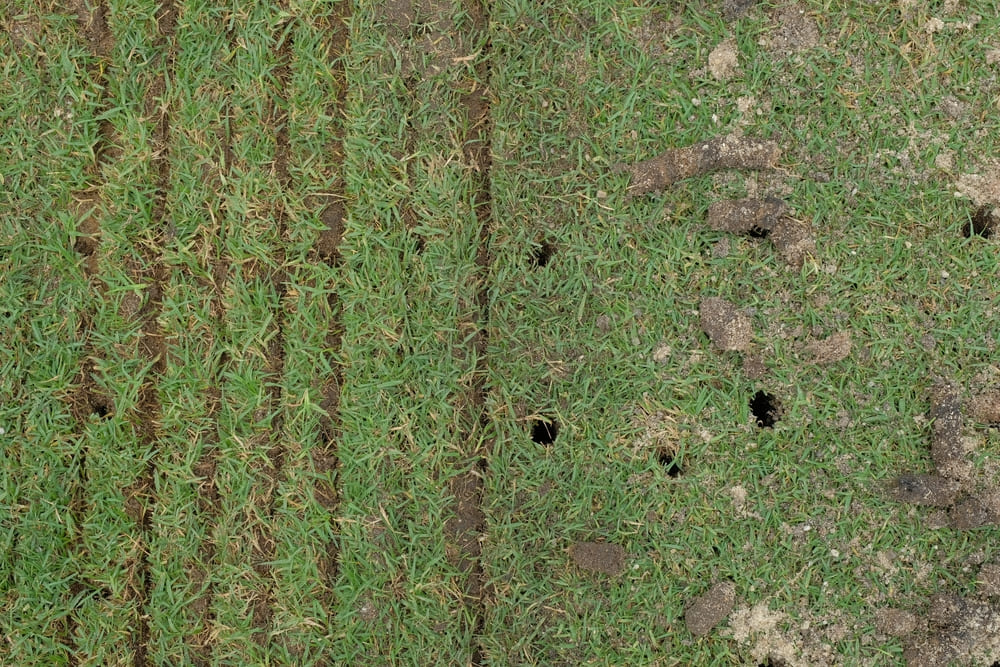Verticutting Bermuda is a crucial process for maintaining healthy and lush Bermuda grass.

The Importance of Verticutting Bermuda
Why Verticutting Matters
Verticutting, also known as vertical mowing or dethatching, is a process that involves cutting through the thatch layer of a lawn.
Thatch is a layer of dead grass, roots, and other organic material that accumulates on the soil surface.
When thatch becomes too thick, it can prevent water, nutrients, and air from reaching the grass roots. This can lead to a variety of problems, including poor growth, disease, and insect infestations.
Bermuda grass, in particular, is prone to developing a thick thatch layer due to its aggressive growth habit. Verticutting Bermuda is essential for maintaining a healthy lawn and preventing these issues.
Benefits of Verticutting Bermuda
There are several benefits to verticutting Bermuda grass, including:
- Improved water and nutrient penetration: By removing the thatch layer, water and nutrients can more easily reach the grass roots.
- Enhanced air circulation: Verticutting allows air to circulate more freely around the grass roots, promoting healthy growth and reducing the risk of disease.
- Reduced pest problems: A thick thatch layer can provide a breeding ground for insects and other pests. Verticutting helps to eliminate this habitat and reduce pest issues.
- Improved appearance: A well-maintained Bermuda lawn with regular verticutting will have a more uniform and attractive appearance.
How to Verticut Bermuda Grass
Tools and Equipment
Before you begin verticutting your Bermuda lawn, you’ll need the proper tools and equipment.
A verticutter, sometimes called a dethatcher or power rake, is a specialized machine designed for this purpose.
Verticutters are available for rent at most garden centers and equipment rental stores.
Timing and Frequency
The best time to verticut Bermuda grass is during its active growing season, typically from late spring to early fall. This allows the grass to recover quickly from the process.
As for frequency, the general rule of thumb is to verticut Bermuda grass at least once a year.
This can vary depending on factors such as the age of the lawn, soil conditions, and climate. In some cases, more frequent verticutting may be necessary to maintain a healthy lawn.
Verticutting Process
To verticut your Bermuda lawn, follow these steps:
- Mow the lawn at a slightly lower height than usual to remove excess grass clippings and prepare the area for verticutting.
- Set the verticutter blades to the appropriate depth, typically around 1/4 inch below the soil surface. This will ensure that the blades cut through the thatch layer without damaging the grass roots.
- Begin verticutting the lawn, moving in straight lines and overlapping each pass slightly to ensure thorough coverage.
- After completing the first pass, adjust the verticutter blades to cut in a different direction, such as perpendicular to the first pass. This will help to remove any remaining thatch.
- Rake up and remove the thatch and debris created by the verticutting process.
- Water the lawn thoroughly to help the grass recover and encourage new growth.
Post-Verticutting Care and Maintenance
Watering and Fertilizing
After verticutting Bermuda, it’s important to provide the lawn with the necessary care to promote healthy recovery and growth.
Water the lawn deeply and consistently, ensuring that the soil remains moist but not saturated. This will encourage the grass roots to grow deeper and stronger.
Fertilizing your Bermuda lawn after verticutting is also essential. Apply a balanced fertilizer, following the manufacturer’s recommended rates and application instructions.
This will provide the grass with the nutrients it needs to recover and thrive.
Mowing and Maintenance
Proper mowing and maintenance practices are key to maintaining a healthy Bermuda lawn after verticutting.
Mow the grass at the recommended height for Bermuda grass, typically between 1 and 2 inches, and avoid removing more than one-third of the grass blade at a time.
Regularly inspect your lawn for signs of pest problems or disease, and address any issues promptly to prevent further damage.
By following these best practices, you can enjoy a lush, healthy Bermuda lawn for years to come.
Common Verticutting Bermuda Questions and Concerns
Will Verticutting Bermuda Damage My Lawn?
When done correctly, verticutting Bermuda grass will not cause permanent damage to your lawn. In fact, it’s an essential part of maintaining a healthy and attractive Bermuda grass lawn.
It’s important to follow the proper verticutting techniques and provide adequate post-verticutting care to ensure a successful outcome.
How Often Should I Verticut Bermuda Grass?
The frequency of verticutting Bermuda grass can vary depending on factors such as the age of the lawn, soil conditions, and climate.
In general, it’s recommended to verticut Bermuda grass at least once a year during the active growing season.
More frequent verticutting may be necessary in some cases to maintain a healthy lawn.
Can I Verticut Bermuda Grass with a Regular Lawn Mower?
While it’s possible to use a regular lawn mower with a dethatching blade attachment for verticutting Bermuda grass, it’s not the most effective method.
A specialized verticutter machine is designed specifically for this purpose and will provide better results.
Conclusion
Verticutting Bermuda grass is an essential lawn care practice for maintaining a healthy, lush, and attractive Bermuda lawn.
By understanding the importance of verticutting, choosing the right tools and equipment, and following the proper techniques and post-verticutting care, you can enjoy a beautiful Bermuda grass lawn that is the envy of your neighbors.
